Now It Can Be Told!
From the pages of 16 Magazine, what Sally Fields really thinks of the Monkees, Bobby Sherman and more!
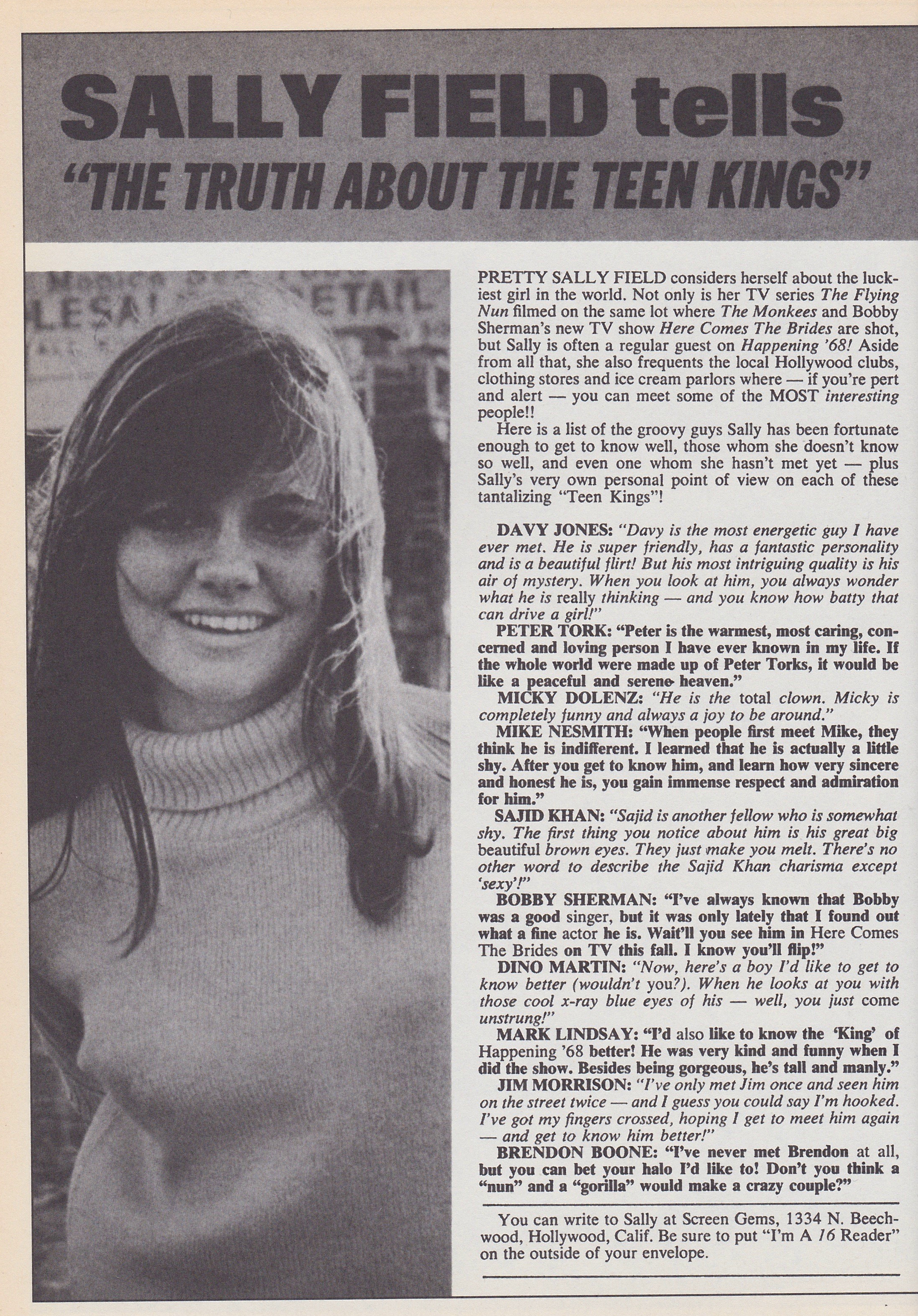
Album Covers for the Ages
No. No, you aren't.

The Story Behind the Song: "Shout"
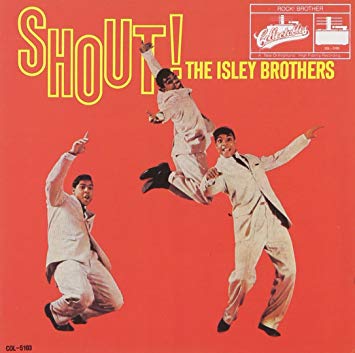 “Shout” by the Isley Brothers was already a classic when the movie Animal House launched it into a kind of musical immortality few songs ever achieve. It might surprise you to know that “Shout” was never really intended to be a song at all.
“Shout” by the Isley Brothers was already a classic when the movie Animal House launched it into a kind of musical immortality few songs ever achieve. It might surprise you to know that “Shout” was never really intended to be a song at all.
Like a lot of R&B acts at that time, the Isleys were hugely influenced by Jackie Wilson, who was pioneering an energetic style of performing that was electrifying audiences. In 1959, the Isleys were closing their shows with their version of Wilson’s “Lonely Teardrops,” a song that had been a hit just a year before. The Isley Brothers were booked into the Uptown Theater in Philadelphia as part of a soul revue, with 15 other acts. The group’s lively rendition of “Lonely Teardrops” landed them the coveted spot closing the bill.
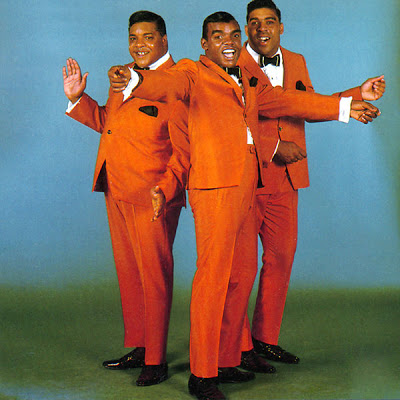 One night during the run of this engagement, the audience got particularly excited, leaving their seats and dancing in the aisle. Lead singer, Ronald Isley began improvising lyrics to keep the song going. One of those ad-libs was “You make me wanna shout!” The band responded with “Shout!,” so he repeated the line. Now, the crowd joined in with “Shout!”
One night during the run of this engagement, the audience got particularly excited, leaving their seats and dancing in the aisle. Lead singer, Ronald Isley began improvising lyrics to keep the song going. One of those ad-libs was “You make me wanna shout!” The band responded with “Shout!,” so he repeated the line. Now, the crowd joined in with “Shout!”
The brothers continued to perform the song this way for the rest of their engagement. When they next entered the recording studio, they discussed recording the song with their producers, Hugo & Luigi. It was the producers who suggested they drop “Lonely Teardrops” and just concentrate on the “Shout” portion.
When they were finished, the Isley Brothers had a song that was too long for just one side of single. So, they cut it in two and released “Shout Part 1” and “Shout Part 2” as a single. And from that time until today, they still close every live show with “Shout.”
4 Things That Could Wreck Your Retirement
 You may think you have enough socked away, but financial planners caution that these items may derail some of the best-laid plans:
You may think you have enough socked away, but financial planners caution that these items may derail some of the best-laid plans:
Luxury Auto: Average cost $55,000
Dream Wedding For Your Child: Average cost $33,000
Dream Around-the-World Cruise: Average cost $25,000
Big Toys: 22-foot sailboat average Cost $25,000 + upkeep
Why Were Blue Jeans Once Called Dungarees?
 When we were first adopting blue jeans as our official look, many times our parents would refer to them as dungarees. Ever wonder where that name came from?
When we were first adopting blue jeans as our official look, many times our parents would refer to them as dungarees. Ever wonder where that name came from?
The word traces all the way back to 1600s when a rough, cheap cloth was imported to England from India. The cloth took the name from the seaside village that produced it, Dongri. The Hindi name for the cloth was dungri. In the UK, that became “dungaree.”
As the cloth was cheap to produce and very long-lasting, it became a favorite of the poor working class in the UK. The same held true when it was imported into the United States many years later. The most typical pieces of clothing made from this cloth were men’s pants and overalls. As it took two pieces of dungaree to make pants, those pants became known as dungarees – even after denim became the fabric of choice for their manufacture.
Their traditional use by poor laborers and farm field hands is another reason your parents (and your school dress code) typically frowned on blue jeans back in the day.
Which Is Healthier: Red Peppers or Green Peppers?

Believe it or not, red peppers – which are green peppers that have been allowed to ripen fully. They contain more nutrients, like beta-carotene and Vitamin C than their little green brothers.
The True Story of the Beatles Logo
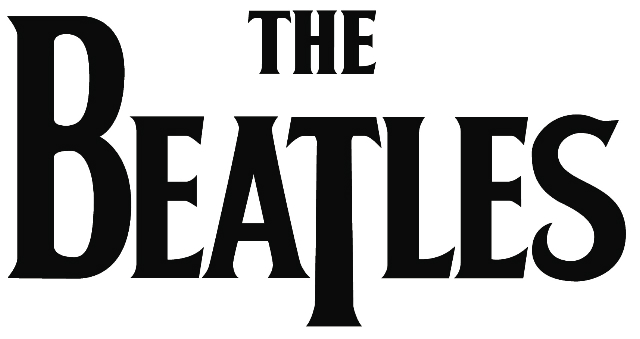 Lots of bands have logos. Chicago made a recording career out of spinning endless variations of their logo into album covers. But the oldest and certainly most iconic is the Beatles logo – the one with what is known as the “Drop-T” design. But who the heck created it?
Lots of bands have logos. Chicago made a recording career out of spinning endless variations of their logo into album covers. But the oldest and certainly most iconic is the Beatles logo – the one with what is known as the “Drop-T” design. But who the heck created it?
The Beatles original logo was a somewhat uninspired affair that played on the insect-like nature of their name. And as he did with so much of the Beatles physical look, it was manager Brian Epstein who brought about the change in the boys’ logo.
 In 1963 as the band was starting to really take off in the UK, Epstein called on local Liverpool music retailer Ivor Arbiter to obtain a better drum kit for Ringo. He also asked Arbiter if he had any ideas for a revised logo for the group. Arbiter quickly sketched out the design we all know so well.
In 1963 as the band was starting to really take off in the UK, Epstein called on local Liverpool music retailer Ivor Arbiter to obtain a better drum kit for Ringo. He also asked Arbiter if he had any ideas for a revised logo for the group. Arbiter quickly sketched out the design we all know so well.
How much was Ivor paid for the design? Five pounds (or $6.50 American).
 But Arbiter had one other condition. The Beatles had to leave the Ludwig logo on the bass drum. That little move probably netted the Ludwig drum company millions in the years that followed.
But Arbiter had one other condition. The Beatles had to leave the Ludwig logo on the bass drum. That little move probably netted the Ludwig drum company millions in the years that followed.
And now you know the story of a little piece of artwork that will outlive us all!
That One-Hit Wonder: Lou Reed?
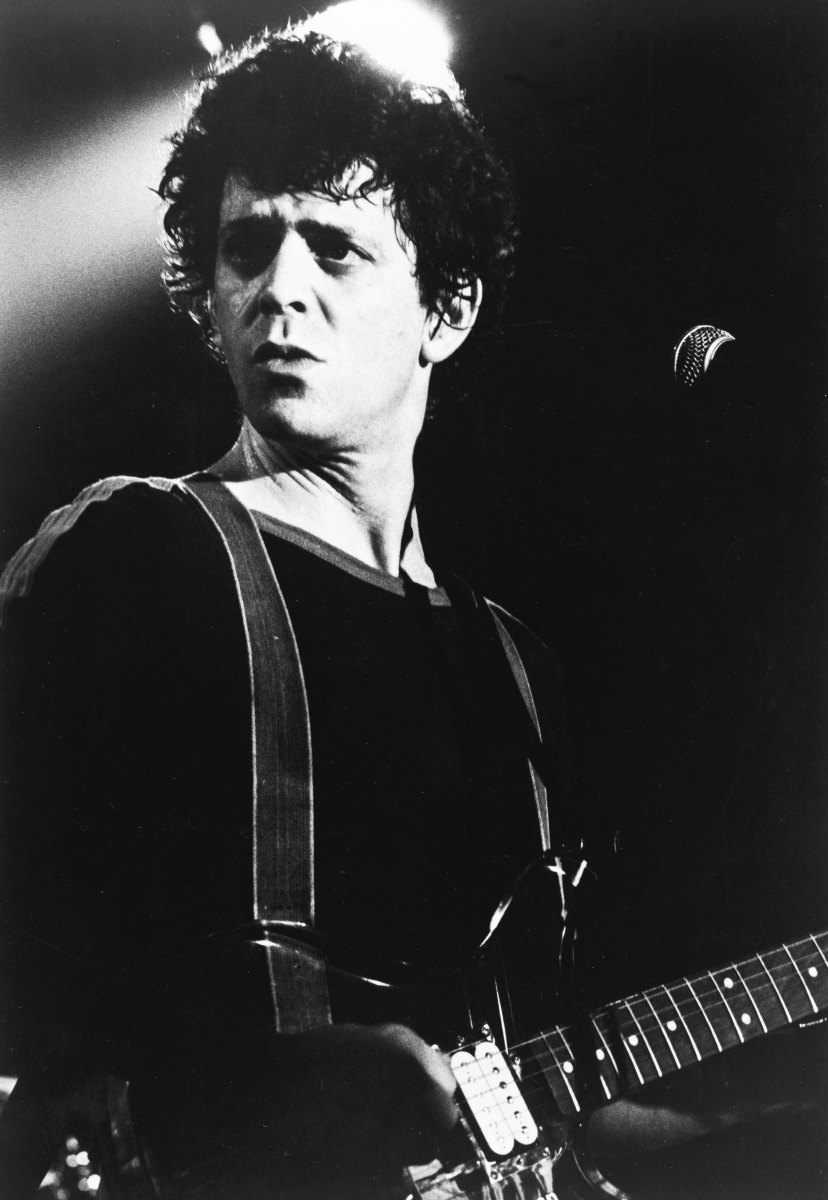 Lou Reed is a giant in rock & roll history. As one of the key members of the Velvet Underground in the late 1960s, commercial success may have eluded him; but the Velvets were a huge influence on both the punk and new wave movements of the 1970s.
Lou Reed is a giant in rock & roll history. As one of the key members of the Velvet Underground in the late 1960s, commercial success may have eluded him; but the Velvets were a huge influence on both the punk and new wave movements of the 1970s.
Yet, the failure of the band to find a mass audience led Reed to temporarily abandon rock music to work as an accountant at his dad’s business. Fortunately, that didn’t last long and Lou soon strapped on his guitar again and embarked on a solo career. With his second solo LP, "Transformer," in 1973, Lou found the commercial success the Velvets missed with one of the most unlikely pop hits of that era – “Walk on the Wild Side” produced by David Bowie and Mick Ronson. As the song deals with transsexualism, drugs and male prostitution, to say nothing of Reed calling out “And the colored girls go…,” that the song found acceptance on Top 40 radio – let along climbing into the Top 20 (and the Top 10 in the UK) – is remarkable.
Predictably, Reed was never able to repeat that Top 40 success, but continued to release albums through 2007. He is a double member of the Rock & Roll Hall of Fame (both as a member of the Velvet Underground and as a solo performer), which makes him somewhat unique among “One-Hit Wonders.”
Reed passed away in 2013, leaving an estate valued at the time at over $10 million dollars. Imagine if he ever had had a second hit record!
Before You Buy That Retirement Condo
 Some things to check before you downsize to the retirement condo you think might be perfect:
Some things to check before you downsize to the retirement condo you think might be perfect:
- Check if the condo association dues have increased from year to year
- Determine if most of the units are owner-occupied and not rentals
- Ask about any plans for any big infrastructure projects planned for the future – and how they’re supposed to be paid for
- Ask if they have a reserve fund and how that fund is invested
Think Before You Go Gluten-Free
 Gluten-Free is all the rage now, but doctors warn it might not be s healthy as you thought.
Gluten-Free is all the rage now, but doctors warn it might not be s healthy as you thought.
If you’ve been diagnosed with celiac disease or other symptoms of gluten sensitivity, then go the gluten-free route. But if you don’t, going gluten-free can actually raise the risk of heart disease.
As always, consult your doctor before you decide to drop glutens from your diet.
Pop Up Player
Latest Posts–Movies & TV
-
Alfred Hitchcock Presents
While often lumped together with “The Twilight Zone” and “Boris Karloff’s Thriller,” “Alfred Hitchcock Presents” is the true original, debuting 4 years before TZ and 5 before “Thriller.” Alfred Hitchcock’s show was also different than…
-
The TV That Time Forgot: The Donna Reed Show
For 8 seasons, The Donna Reed Show provided Baby Boomers with a sort of Mother Knows Best amid a ton of family sitcoms focused on the father. Cast as Donna Stone, Donna presided over a…
-
Friday Night at the Drive-In: Lover Come Back (1961)
Sequels & remakes? Nothing new here – Hollywood’s been recycling stuff ever since the first “magic lantern shows.” Want proof? Let’s settle in to watch one of those terribly puritanical “sex comedies” from the Sixties…
-
The TV That Time Forgot: The Millionaire
Boy! Could we use a show like this in real life! From 1955 to 1960, for 5 seasons an eccentric millionaire would give away $1 million to somebody he never even met. We were allowed…
-
Summer at the Triple-R
One of the biggest, most popular TV shows from the Baby Boomers' childhood was The Mickey Mouse Club. Airing after school Monday through Friday on ABC, it was “must-see TV” for our generation. While the…
-
The Bombshell and the Virgin
The two biggest box office attractions of the late 1950s and early 1960s had many similarities and two huge differences. Both were blondes. Both were very attractive. Both changed their names when they got into…


